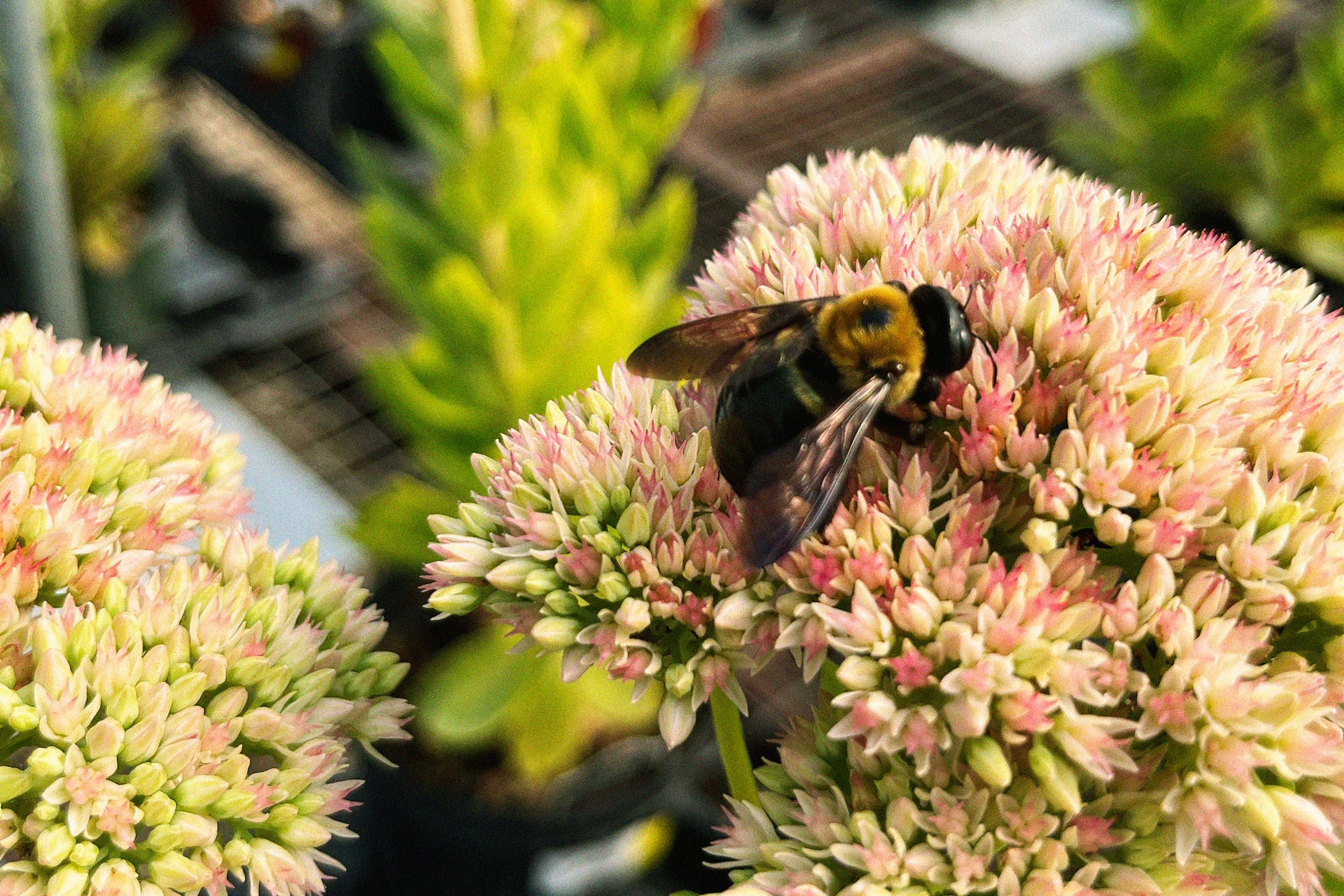5 late season pollinators to grow in the Midwest
Pollinators play a crucial role in our ecosystems, ensuring that plants reproduce and thrive. As summer blooms fade, it's essential to have plants in your garden that can continue to attract and nourish these beneficial insects through the fall. Here are five standout plants suitable for both urban and suburban gardens in the Midwest that provide a burst of color, interesting texture, and winter interest:
1. Autumn Joy Sedum (Sedum 'Autumn Joy'): This easy-to-grow perennial is a late-season favorite for both gardeners and pollinators. The star-shaped blooms evolve from a rosy-pink in late summer to a rich bronze in fall, serving as a nectar source for bees and butterflies. Their fleshy, succulent leaves are drought-resistant, making them ideal for urban settings where watering might be limited. As winter sets in, the dried flower heads provide structural interest amidst a snow-covered landscape.
2. Goldenrod (Solidago spp.): Often mistakenly believed to be a source of hay fever, goldenrod is actually a boon for late-season pollinators. Its bright yellow flowers attract a variety of insects and provide a burst of color in the garden. Several species are available, with varying heights and forms to fit any garden size. The feathery, plume-like flower clusters add a unique texture, and their seed heads stand tall through winter.

3. Kismet Red Echinacea (Echinacea hybrid 'TNECHKRD'): Known for their medicinal properties, echinacea plants, are also a hit with pollinators. With large, daisy-like blooms and spiky central cones, they provide both color and texture to the garden. Bees and butterflies flock to these flowers, ensuring late-season pollination. In addition, the seed heads are left standing, they can provide visual interest in the winter and a food source for birds.
4. Joe-Pye Weed (Eutrochium purpureum): This native perennial is an impressive sight, with its tall stalks topped with clusters of pinkish-purple flowers. It's especially loved by butterflies. The plant's height and texture make it a striking backdrop in garden beds, and the seed heads persist into winter, offering texture against snow and barren landscapes.
5. Ornamental Grasses: While not typically considered for their pollinator benefits, many ornamental grasses bloom in the late season, their wispy panicles attracting a variety of insects. Grasses like switchgrass (Panicum virgatum) and little bluestem (Schizachyrium scoparium) offer interesting textures and movement to the garden. Additionally, they remain upright in winter, their dried leaves and seed heads adding a soft, golden hue to the landscape.
Incorporating these plants into Midwest gardens not only ensures a longer bloom season but also supports vital pollinators during a time when food sources become scarce. With their combined attributes of color, texture, and winter interest, they are ideal choices for creating a dynamic and ecologically balanced garden, whether in a city or a suburb.
